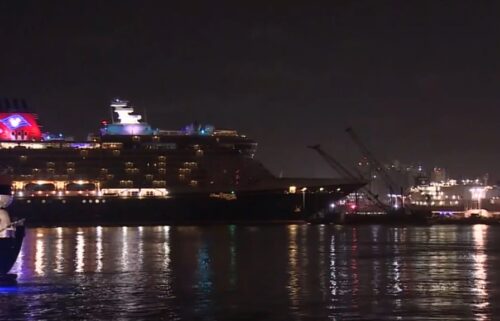Viral flamingo that flew into Tampa Bay by hurricane winds has been located in Mexico
By Lynn Martinez, Kevin Boulandier
Click here for updates on this story
MEXICO CITY (WSVN) — A famed flamingo that became a viral sensation after being blown into the Tampa Bay area nearly two years ago by a hurricane has been located.
“Everyone will remember that in Hurricane Idalia, there was a flock of flamingos that were migrating and got caught up in the storm,” said Julie Wraithmell, Executive Director of Audubon Florida.
Some of those flamingos landed in Tampa Bay, including a male flamingo later named Peaches.
“It was rescued by some anglers that were out in their boat and taken to rehab. When it was ready to be released, Audubon Florida and our partners at Zoo Miami banded that bird just to see if we could get some more information on what its fate would ultimately be,” said Wraithmell.
The bird was last spotted in October 2023 near Fort DeSoto then disappeared. For the next year and a half, his whereabouts were unknown.
This led researchers to determine where he ended up and the route of his migration.
Experts said bird tagging helps conservationists better understand bird migration patterns and whether rehabbed birds live long lives.
However, they warn that tagging only works if the tagged bird comes in contact with a human again and that the human reports the tag number.
“The likelihood of reciting one of those bands is not always really high. I kind of liken it to putting a message in a bottle and tossing it into the ocean of migration and hoping that it fetches up on a beach somewhere and somebody finds it,” said Wraithmell.
While the likelihood isn’t high, in peaches case, it did happen.
In May, researchers in Mexico were tallying nearly 15,000 flamingo nests across the Yucatán Peninsula when one bird stood out.
The researchers saw the male flamingo with a blue band around his leg that read “USO2,” Peaches’ tag number.
“It’s a redemption story. Flamingos used to breed in Florida. We shot them out around 1900 for food and for feathers. We’ve made tremendous strides in wetland restoration, hopefully, to create a more hospitable place for them to return and perhaps even breed in future years.”
It was a major victory for conservationists as Peaches is only the second flamingo in the United States to ever be successfully tracked.
Please note: This content carries a strict local market embargo. If you share the same market as the contributor of this article, you may not use it on any platform.

